Azure Container Apps Quickstart - Overview
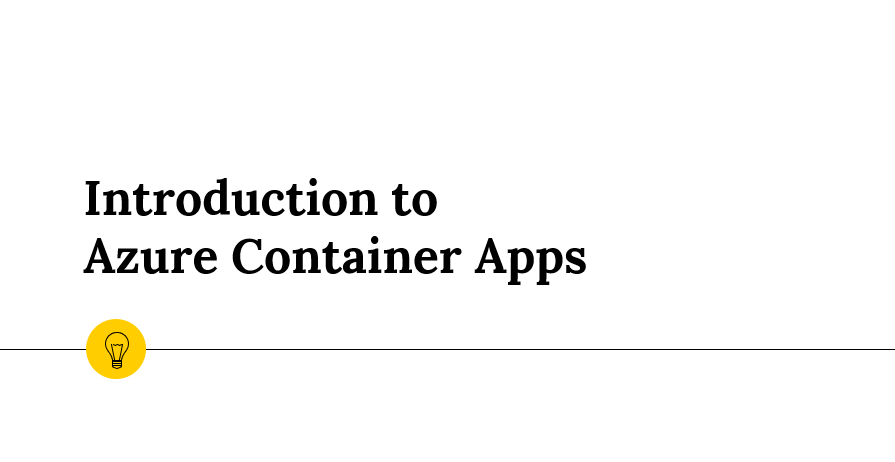
First question!

Probably not! If you have, second question:

Me? Not so much, that’s why I’m having a hard time finding the use of it and putting it into scenarios where I find it useful.

So, my understanding of Kubernetes is this. It’s like diving into this crazy world of container management where things can get real messy, real quick. Picture yourself in a tangled web of clusters, deployments, and configurations – it’s like trying to unscramble a plate of spaghetti! Even seasoned pros can find themselves scratching their heads. You’re constantly juggling pods, services, and deployments, trying to keep everything from going haywire. It’s a bit like trying to solve a Rubik’s cube blindfolded – tricky stuff, right? So, if Kubernetes has ever left you feeling like you’re lost in the weeds, don’t sweat it – you’re definitely not alone!
Kubernetes abstracts container orchestration, but its operational complexity can deter adoption. However, not all hope is lost! Enter Azure Container Apps: a service designed to streamline container deployment, provisioning, and management, while minimizing operational overhead.
Azure Container Apps Overview
Azure Container Apps leverages Kubernetes’ capabilities but presents them in a serverless framework. It manages resource provisioning, scaling, routing, and certificate creation without requiring direct access to the Kubernetes API. This results in reduced operational complexity, allowing developers to focus more on application development.
Key Features:
- Powered by Kubernetes
- Fully Serverless (Can scale down to zero)
- Microservices with Dapr
- Autoscaling (Http-based or KEDA)
- Public/Private Container Registry Support
- Container Revisions
- No root access
- Linux-based containers only
While Azure Container Apps harnesses Kubernetes’ power, it abstracts the complexity associated with managing Kubernetes clusters directly. This makes it an attractive option for developers seeking a managed Kubernetes experience without the administrative burden.
Container Apps vs Other Azure Container Options
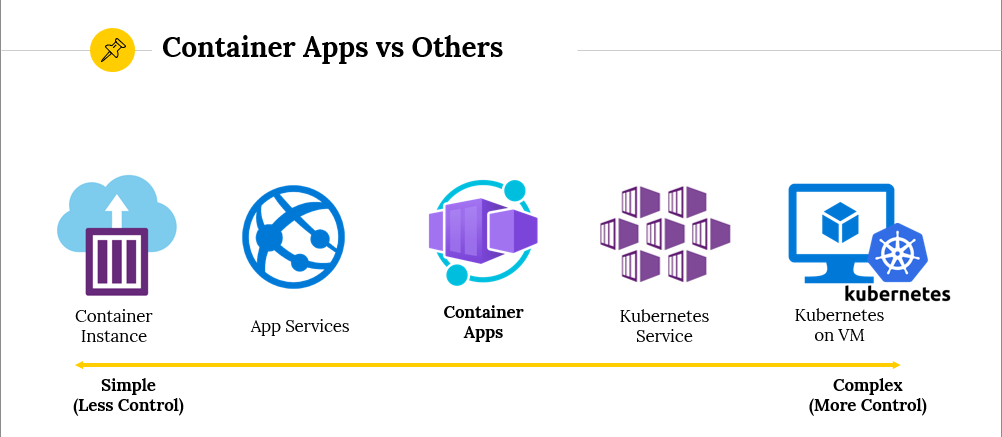
Azure Container Apps sits at the intersection of simplicity and control, offering a managed Kubernetes experience without the need for direct API access. It’s a compelling alternative to traditional Kubernetes deployment models, such as Azure Kubernetes Service (AKS), Azure Container Instances (ACI), and Azure Virtual Machines with Kubernetes.
Scenarios for Usage:
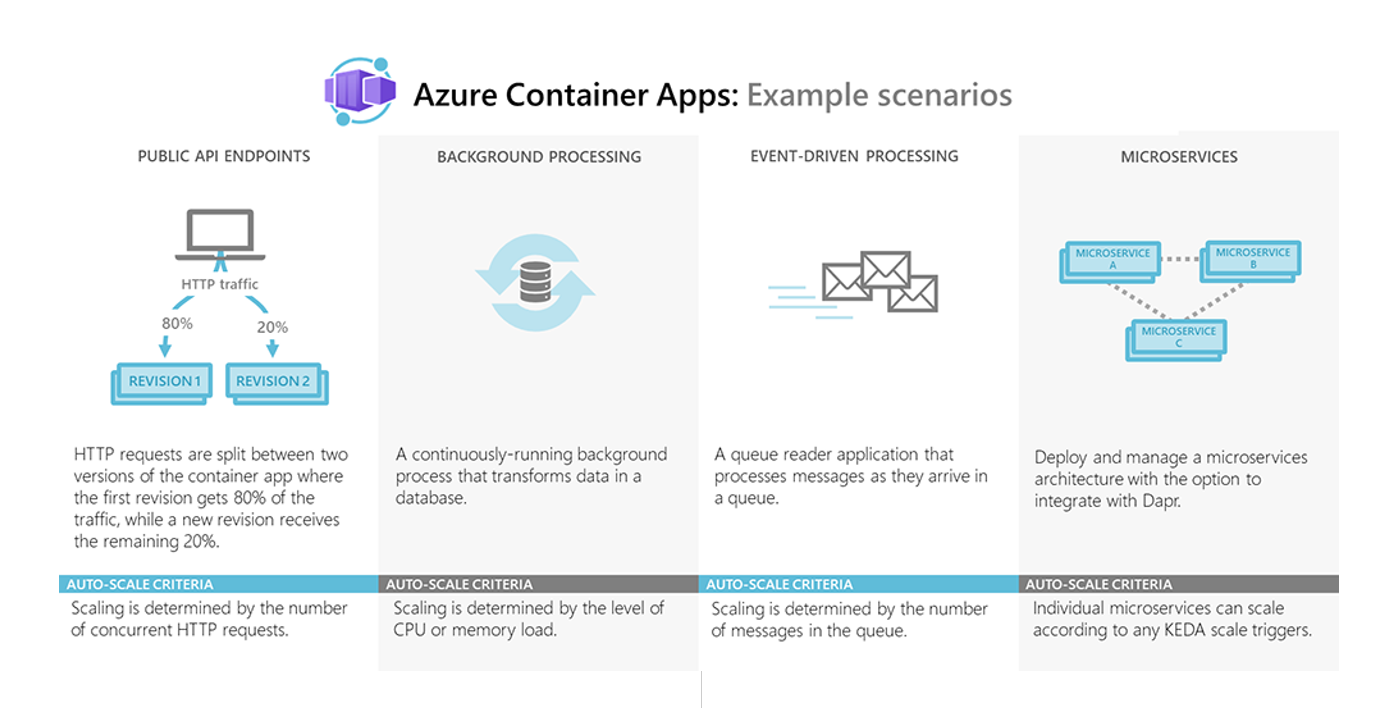
- API endpoints
- Background processing
- Event-driven processing
- Microservices with Dapr integration
Environments & Containers

Environments in Azure Container Apps serve as isolation boundaries for container apps. These environments encapsulate collections of container apps and support the deployment of multiple active or inactive container revisions. Containers within environments are based on Linux and support various development stacks.
Pricing
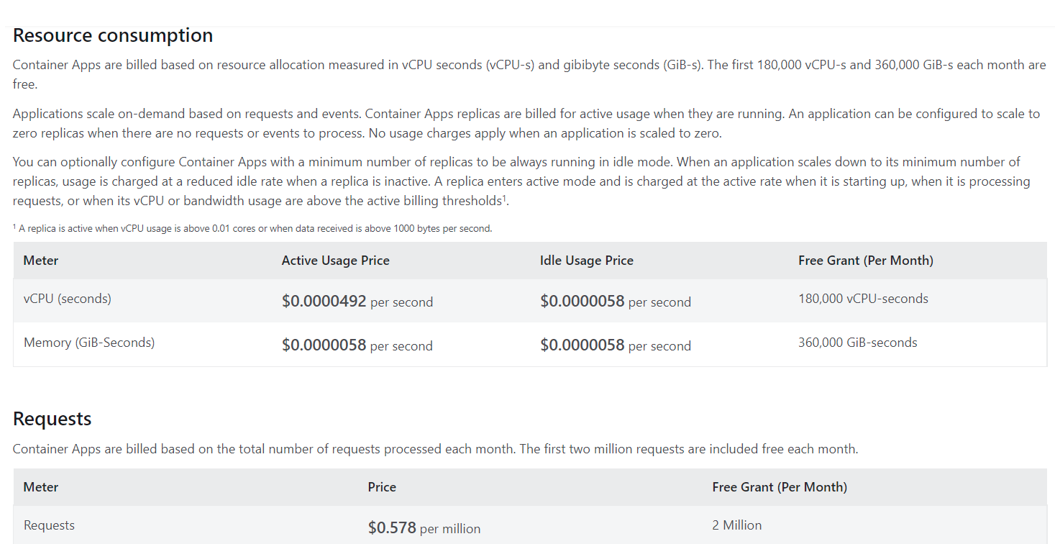
Azure Container Apps follows a consumption-based pricing model similar to Azure Functions. You only pay for resources when they’re utilized, with generous free usage tiers available for experimentation and development.
Fully-managed DAPR!
One of the standout features of Azure Container Apps is its fully-managed Dapr integration. Dapr, or the Distributed Application Runtime, is an open-source project that simplifies building microservices. Dapr offers a variety of building blocks, such as service invocation, state management, pub/sub messaging, and more. These capabilities are designed to tackle common challenges in cloud-native application development.
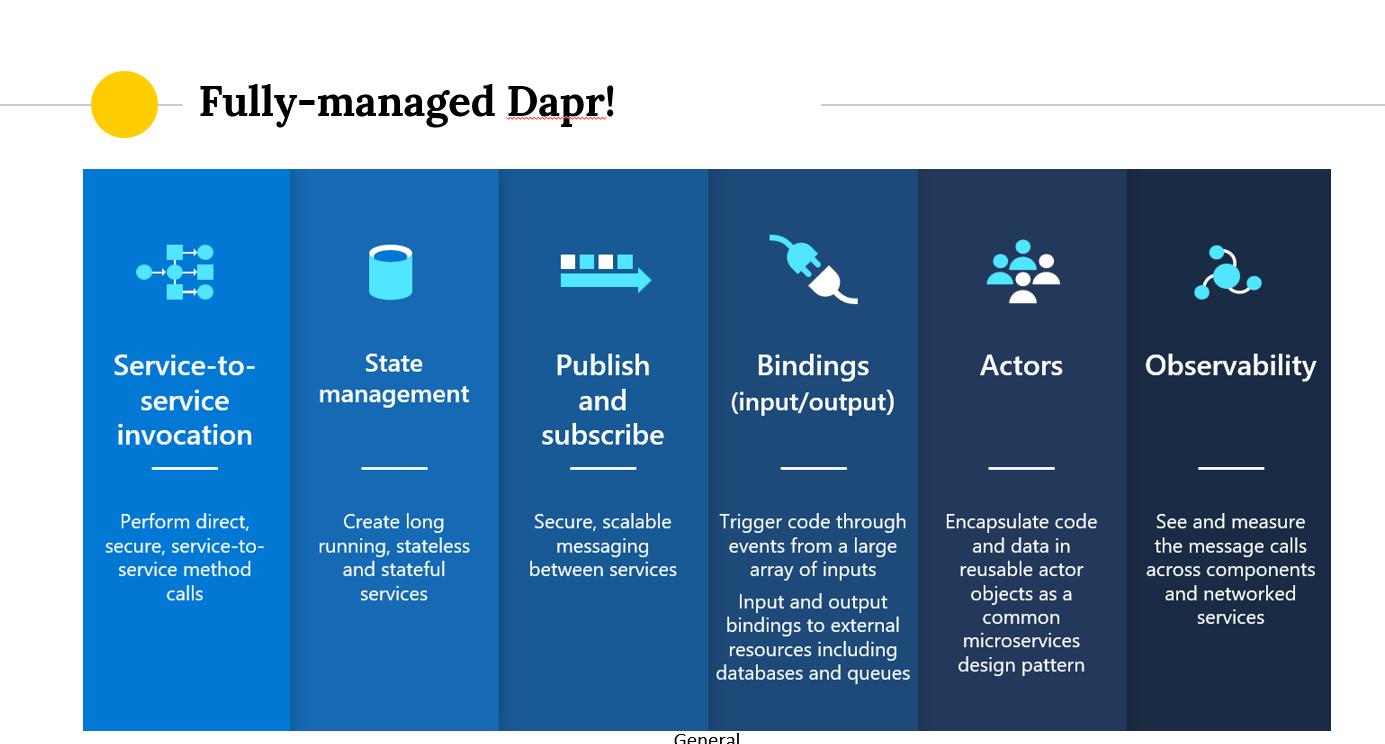
Why Dapr Matters:
- Simplifies Microservices Development: Dapr offers consistent patterns and building blocks that developers can use across multiple applications and platforms.
- Platform Agnostic: It works across cloud and edge, providing flexibility in where you deploy your applications.
- Community and Ecosystem: Being open source, Dapr benefits from contributions and support from a wide community, continually enhancing its features and usability.
Advantages of Fully-Managed Dapr in Azure Container Apps:
- Ease of Use: With Dapr fully managed within Azure Container Apps, developers get to leverage its benefits without the overhead of managing its infrastructure.
- Integration: Seamlessly integrates with Azure services and other cloud environments, providing a robust ecosystem for your microservices.
- Scalability and Reliability: Dapr components are designed to scale seamlessly with your applications, ensuring high availability and reliability.
By incorporating fully-managed Dapr, Azure Container Apps empowers developers to focus more on writing code that matters rather than getting bogged down by the complexities of microservices architecture and communication. This offering stands as a testament to Azure’s commitment to simplifying cloud-native application development and management.
Further Exploration
References:
- Azure Container Apps
- Azure Container Apps overview
- How to Build and Deliver Apps Fast and Scalable with Azure Container Apps
If you have any questions or wish to explore specific topics further, feel free to reach out to me:
- Bryan Anthony Garcia
- @mindofai
- bryananthonygarcia@live.com
Thank you for reading!